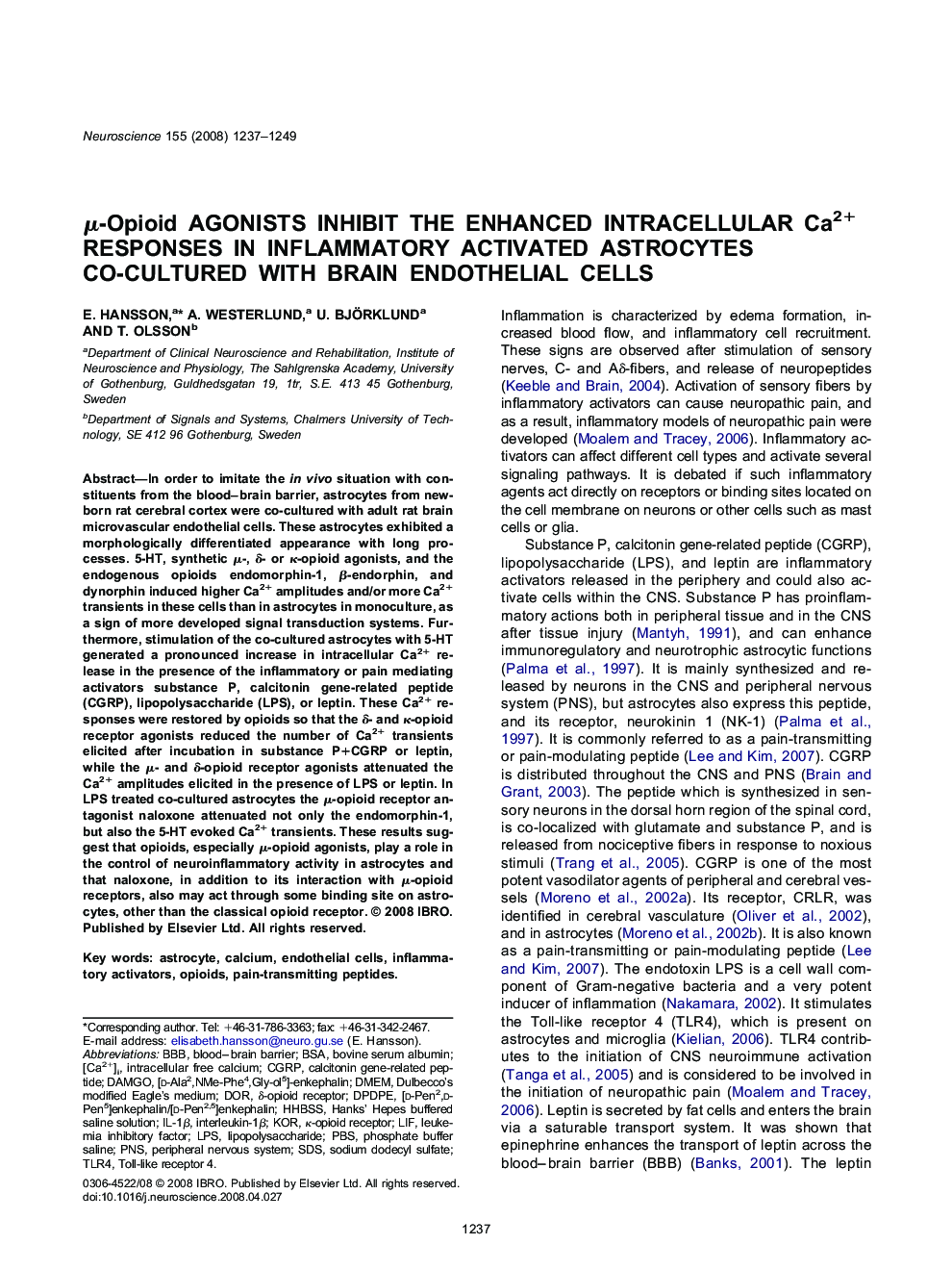| Article ID | Journal | Published Year | Pages | File Type |
|---|---|---|---|---|
| 4340591 | Neuroscience | 2008 | 13 Pages |
Abstract
In order to imitate the in vivo situation with constituents from the blood-brain barrier, astrocytes from newborn rat cerebral cortex were co-cultured with adult rat brain microvascular endothelial cells. These astrocytes exhibited a morphologically differentiated appearance with long processes. 5-HT, synthetic μ-, δ- or κ-opioid agonists, and the endogenous opioids endomorphin-1, β-endorphin, and dynorphin induced higher Ca2+ amplitudes and/or more Ca2+ transients in these cells than in astrocytes in monoculture, as a sign of more developed signal transduction systems. Furthermore, stimulation of the co-cultured astrocytes with 5-HT generated a pronounced increase in intracellular Ca2+ release in the presence of the inflammatory or pain mediating activators substance P, calcitonin gene-related peptide (CGRP), lipopolysaccharide (LPS), or leptin. These Ca2+ responses were restored by opioids so that the δ- and κ-opioid receptor agonists reduced the number of Ca2+ transients elicited after incubation in substance P+CGRP or leptin, while the μ- and δ-opioid receptor agonists attenuated the Ca2+ amplitudes elicited in the presence of LPS or leptin. In LPS treated co-cultured astrocytes the μ-opioid receptor antagonist naloxone attenuated not only the endomorphin-1, but also the 5-HT evoked Ca2+ transients. These results suggest that opioids, especially μ-opioid agonists, play a role in the control of neuroinflammatory activity in astrocytes and that naloxone, in addition to its interaction with μ-opioid receptors, also may act through some binding site on astrocytes, other than the classical opioid receptor.
Keywords
PBSHHBSSLIFLPSDMEMDPDPETLR4SDSCGRPIL-1βBSADAMGODulbecco's modified Eagle's medium[Ca2+]iδ-Opioid receptorAstrocytebovine serum albuminOpioidsInterleukin-1βDORBlood–brain barrierBBBsodium dodecyl sulfateEndothelial cellsperipheral nervous systemleukemia inhibitory factorphosphate buffer salinelipopolysaccharideKORcalcitonin gene-related peptidePNSCalciumintracellular free calciumκ-opioid receptorToll-like receptor 4
Related Topics
Life Sciences
Neuroscience
Neuroscience (General)
Authors
E. Hansson, A. Westerlund, U. Björklund, T. Olsson,
